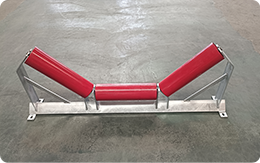 Afrikaans
Afrikaans  Albanian
Albanian  Amharic
Amharic  Arabic
Arabic  Armenian
Armenian  Azerbaijani
Azerbaijani  Basque
Basque  Belarusian
Belarusian  Bengali
Bengali  Bosnian
Bosnian  Bulgarian
Bulgarian  Catalan
Catalan  Cebuano
Cebuano  Corsican
Corsican  Croatian
Croatian  Czech
Czech  Danish
Danish  Dutch
Dutch  English
English  Esperanto
Esperanto  Estonian
Estonian  Finnish
Finnish  French
French  Frisian
Frisian  Galician
Galician  Georgian
Georgian  German
German  Greek
Greek  Gujarati
Gujarati  Haitian Creole
Haitian Creole  hausa
hausa  hawaiian
hawaiian  Hebrew
Hebrew  Hindi
Hindi  Miao
Miao  Hungarian
Hungarian  Icelandic
Icelandic  igbo
igbo  Indonesian
Indonesian  irish
irish  Italian
Italian  Japanese
Japanese  Javanese
Javanese  Kannada
Kannada  kazakh
kazakh  Khmer
Khmer  Rwandese
Rwandese  Korean
Korean  Kurdish
Kurdish  Kyrgyz
Kyrgyz  Lao
Lao  Latin
Latin  Latvian
Latvian  Lithuanian
Lithuanian  Luxembourgish
Luxembourgish  Macedonian
Macedonian  Malgashi
Malgashi  Malay
Malay  Malayalam
Malayalam  Maltese
Maltese  Maori
Maori  Marathi
Marathi  Mongolian
Mongolian  Myanmar
Myanmar  Nepali
Nepali  Norwegian
Norwegian  Norwegian
Norwegian  Occitan
Occitan  Pashto
Pashto  Persian
Persian  Polish
Polish  Portuguese
Portuguese  Punjabi
Punjabi  Romanian
Romanian  Russian
Russian  Samoan
Samoan  Scottish Gaelic
Scottish Gaelic  Serbian
Serbian  Sesotho
Sesotho  Shona
Shona  Sindhi
Sindhi  Sinhala
Sinhala  Slovak
Slovak  Slovenian
Slovenian  Somali
Somali  Spanish
Spanish  Sundanese
Sundanese  Swahili
Swahili  Swedish
Swedish  Tagalog
Tagalog  Tajik
Tajik  Tamil
Tamil  Tatar
Tatar  Telugu
Telugu  Thai
Thai  Turkish
Turkish  Turkmen
Turkmen  Ukrainian
Ukrainian  Urdu
Urdu  Uighur
Uighur  Uzbek
Uzbek  Vietnamese
Vietnamese  Welsh
Welsh  Bantu
Bantu  Yiddish
Yiddish  Yoruba
Yoruba  Zulu
Zulu drive belts and pulleys
Understanding Drive Belts and Pulleys Key Components of Mechanical Systems
In the world of mechanical engineering, drive belts and pulleys play a critical role in the operation of machines and mechanical systems. These components are essential for transmitting power and motion from one part of a system to another, ensuring efficient operation and functionality.
What are Drive Belts?
Drive belts are flexible loops made of rubber, fabric, or composite materials, designed to connect two or more rotating shafts. Their primary function is to transfer motion and power from the drive shaft, often powered by an engine or motor, to a driven shaft, which may operate a tool, a conveyor belt, or other machinery. There are various types of drive belts, including V-belts, flat belts, and timing belts, each suited for different applications based on their design and the loads they must handle.
1. V-Belts These are the most common type of drive belts, characterized by their trapezoidal cross-section. They are designed to sit in the grooves of pulleys, allowing for efficient grip and reducing slippage. V-belts are often used in automotive engines, HVAC systems, and numerous industrial applications.
2. Flat Belts These belts have a simple rectangular cross-section and are used in applications where speed and distance are prioritized over torque. Flat belts are commonly seen in older machinery and light to moderate applications.
3. Timing Belts These are unique as they have teeth that mesh with the gears on the pulleys. Timing belts ensure precise synchronization between the rotating components, making them essential in applications like automotive timing systems and robotic mechanisms.
The Role of Pulleys
Pulleys are simple machines that consist of a wheel on an axle or shaft designed to support the movement and change the direction of force in a belt-driven mechanical system. They come in various designs, including fixed, movable, and compound pulleys, each serving a different purpose.
drive belts and pulleys

1. Fixed Pulleys These pulleys are anchored and do not move with the belt. They are typically used to change the direction of the force applied to the belt, making it easier to transfer power between components.
2. Movable Pulleys These are attached to the load and can move along with the belt. They reduce the amount of input force needed to lift heavy loads, providing a mechanical advantage.
3. Compound Pulleys Combining fixed and movable pulleys helps achieve greater mechanical advantage and efficiency. They are commonly used in cranes and hoisting systems.
Benefits of Drive Belts and Pulleys
The integration of drive belts and pulleys in mechanical systems offers numerous advantages. One of the key benefits is the ability to transmit power over considerable distances while reducing wear and tear on machinery. They also allow for the use of lightweight materials, improving energy efficiency and decreasing operational costs.
Moreover, these systems are relatively easy to maintain and can be adjusted to meet varying power transmission needs. For instance, by changing the pulley size or the belt tension, operators can fine-tune the speed and torque delivered to driven components.
Conclusion
In summary, drive belts and pulleys are integral components of many mechanical systems, facilitating efficient power transmission and motion control. Understanding their functionality and the types available is essential for anyone involved in mechanical design, maintenance, or operation. As technology advances, the innovations in materials and designs for belts and pulleys continue to enhance their efficiency, reliability, and versatility in a wide range of applications. Whether in automotive systems, industrial machinery, or everyday devices, the significance of these components cannot be overstated.
-
Revolutionizing Conveyor Reliability with Advanced Rubber Lagging PulleysNewsJul.22,2025
-
Powering Precision and Durability with Expert Manufacturers of Conveyor ComponentsNewsJul.22,2025
-
Optimizing Conveyor Systems with Advanced Conveyor AccessoriesNewsJul.22,2025
-
Maximize Conveyor Efficiency with Quality Conveyor Idler PulleysNewsJul.22,2025
-
Future-Proof Your Conveyor System with High-Performance Polyurethane RollerNewsJul.22,2025
-
Driving Efficiency Forward with Quality Idlers and RollersNewsJul.22,2025





























